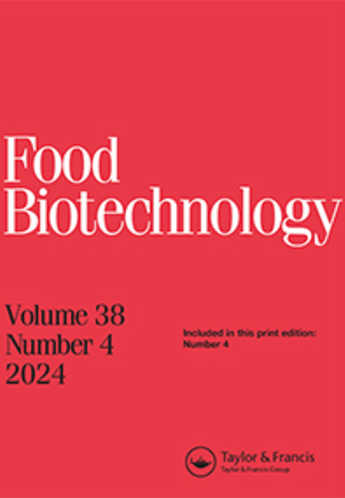Comparative transcriptome analysis of virulence genes of enterohemorrhagic Escherichia coli O157:H7 to acid stress
IF 1.6
4区 农林科学
Q4 BIOTECHNOLOGY & APPLIED MICROBIOLOGY
引用次数: 1
Abstract
ABSTRACT Enterohaemorrhagic Escherichia coli (EHEC) O157:H7 mounts specific acid-resistance systems against acid stress, making it more difficult to eradicate in food industry. To date, RNAseq-based analysis focusing on the virulence factors within an acidic environment is restricted to asmall part of virulence gene clusters. In this study E.coli O157:H7 survived HCl stress at pH 3.0 for up to 1 h preceded by acid adaptation at pH 5.5 for 1 h. At the same time, bacteria without stimulus were cultured in neutral TSB broth for 2 h.Then, transcriptome analysis was performed to compare virulence-related genes at neutral and acidic pH. Though transcripts indicated adownshift of the flagellar, fimbriae and LEE-associated genes, the increased expression of adhesin-related genes, iron uptake genes and some potential virulence factors were identified. Comparison of the gene expression with respect to virulence factors revealed strongest cell response to the relevant stress and increased protective response for survival in the acidic pH. This suggests that E.coli O157:H7 might be still virulent following HCl stress.肠出血性大肠杆菌O157:H7对酸性胁迫毒力基因的比较转录组分析
肠出血性大肠杆菌O157:H7对酸胁迫具有特异的耐酸性,使其在食品工业中更难根除。到目前为止,基于RNAseq的分析侧重于酸性环境中的毒力因子,仅限于毒力基因簇的一部分。在这项研究中,大肠杆菌O157:H7在pH 3.0的HCl胁迫下存活1小时,然后在pH 5.5的酸适应1小时。同时,将没有刺激的细菌在中性TSB肉汤中培养2小时。然后,进行转录组分析,以比较中性和酸性pH下的毒力相关基因。尽管转录物表明鞭毛向下移动,鉴定了菌毛和LEE相关基因、粘附素相关基因表达增加、铁摄取基因和一些潜在的毒力因子。基因表达与毒力因子的比较显示,细胞对相关应激的反应最强,并且在酸性pH下对存活的保护反应增加。这表明大肠杆菌O157:H7在HCl应激后可能仍然具有毒力。
本文章由计算机程序翻译,如有差异,请以英文原文为准。
求助全文
约1分钟内获得全文
求助全文
来源期刊

Food Biotechnology
工程技术-生物工程与应用微生物
CiteScore
3.80
自引率
0.00%
发文量
15
审稿时长
>12 weeks
期刊介绍:
Food Biotechnology is an international, peer-reviewed journal that is focused on current and emerging developments and applications of modern genetics, enzymatic, metabolic and systems-based biochemical processes in food and food-related biological systems. The goal is to help produce and improve foods, food ingredients, and functional foods at the processing stage and beyond agricultural production.
Other areas of strong interest are microbial and fermentation-based metabolic processing to improve foods, food microbiomes for health, metabolic basis for food ingredients with health benefits, molecular and metabolic approaches to functional foods, and biochemical processes for food waste remediation. In addition, articles addressing the topics of modern molecular, metabolic and biochemical approaches to improving food safety and quality are also published.
Researchers in agriculture, food science and nutrition, including food and biotechnology consultants around the world will benefit from the research published in Food Biotechnology. The published research and reviews can be utilized to further educational and research programs and may also be applied to food quality and value added processing challenges, which are continuously evolving and expanding based upon the peer reviewed research conducted and published in the journal.
 求助内容:
求助内容: 应助结果提醒方式:
应助结果提醒方式:


